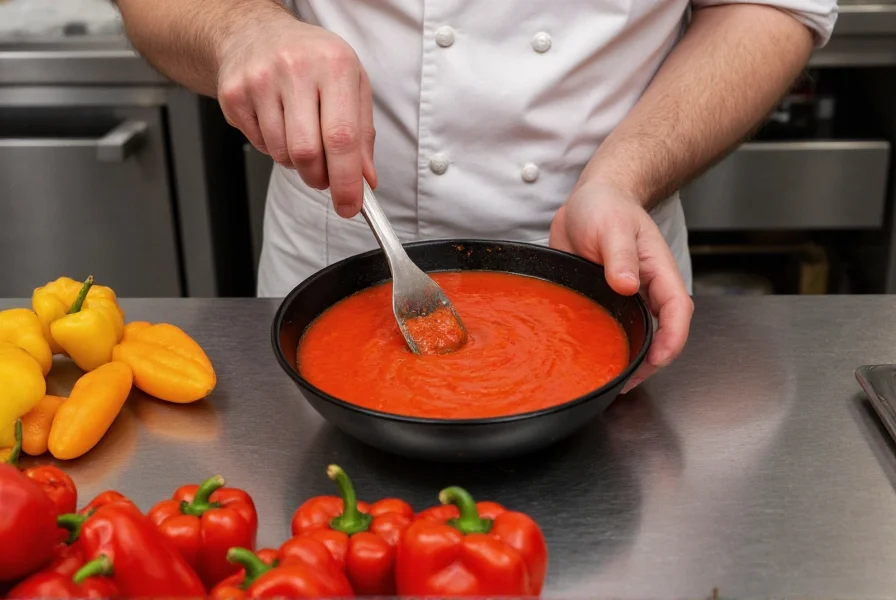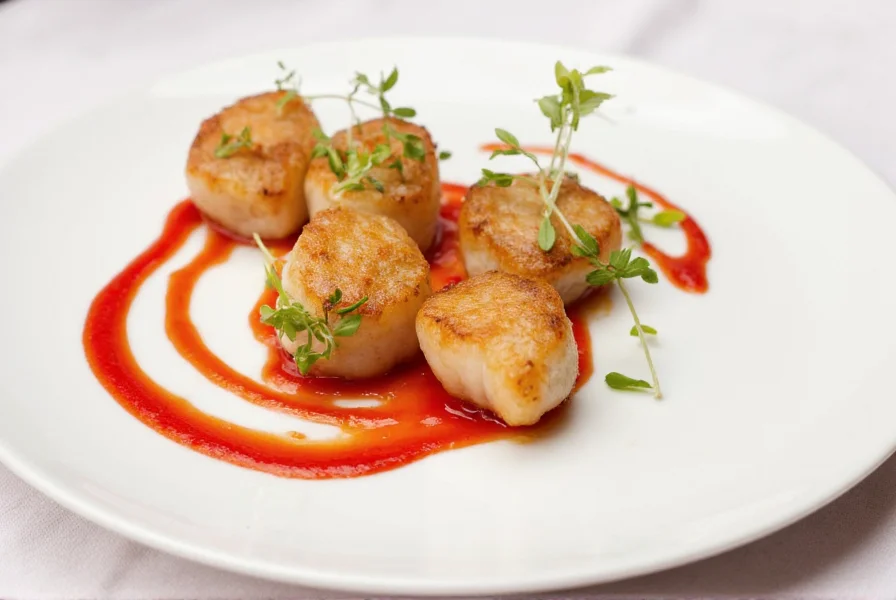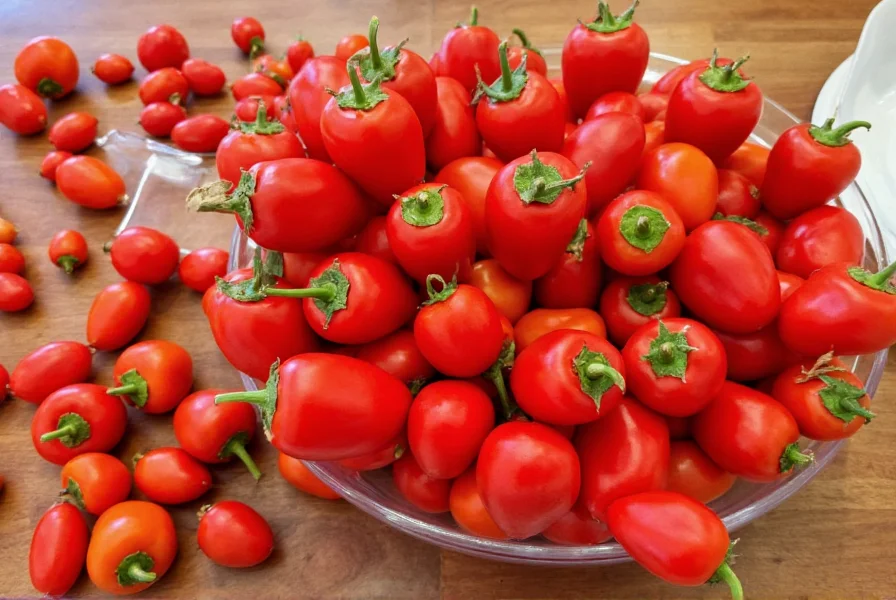Pepper coulis is a smooth, flavorful sauce made from roasted or cooked bell peppers, typically blended until velvety and seasoned with herbs and spices. This versatile culinary staple enhances dishes with its sweet, smoky depth and vibrant color, commonly used in French cuisine to complement meats, seafood, eggs, and vegetables.
Understanding Pepper Coulis: More Than Just a Sauce
Pepper coulis represents one of the most elegant yet accessible sauces in modern cooking. Unlike traditional gravies or cream-based sauces, this preparation highlights the natural sweetness of peppers through careful roasting and blending. Professional chefs value pepper coulis for its ability to transform simple dishes into restaurant-quality presentations with minimal effort.
The Essential Components of Authentic Pepper Coulis
Creating exceptional pepper coulis begins with selecting the right peppers. While red bell peppers remain the most popular choice for their natural sweetness and deep color, culinary experts often combine multiple pepper varieties to achieve complex flavor profiles. The standard preparation involves:
- Roasting peppers until charred (typically under broiler or over open flame)
- Peeling away the blistered skin to reveal tender flesh
- Removing seeds and membranes
- Blending with aromatic ingredients like garlic, shallots, and fresh herbs
- Straining for ultra-smooth texture (optional for rustic versions)
- Seasoning with salt, acid (vinegar or citrus), and subtle spices
| Pepper Type | Flavor Profile | Best Use in Coulis |
|---|---|---|
| Red Bell Peppers | Sweet, fruity, mild | Classic base for vibrant red coulis |
| Yellow Bell Peppers | Sweeter, floral notes | Lighter, brighter variations |
| Orange Bell Peppers | Balanced sweet-tart | Complex flavor foundations |
| Poblano Peppers | Mild heat, earthy | Subtly spicy variations |
Step-by-Step Preparation Guide
Mastering homemade pepper coulis requires attention to detail at each stage. Follow these professional techniques for restaurant-quality results:
- Roasting perfection: Place whole peppers under a broiler or directly over gas flame, turning frequently until completely blackened. This caramelizes natural sugars while adding subtle smokiness.
- Skin removal: Transfer charred peppers to a covered bowl for 10 minutes, then peel under cold running water. The steam loosens skins while preserving flesh integrity.
- Texture refinement: For silky-smooth results, pass the pepper mixture through a fine-mesh sieve using a rubber spatula. This removes any remaining fibrous bits.
- Flavor balancing: Adjust seasoning with lemon juice or sherry vinegar to brighten flavors, and a pinch of cayenne for depth (optional).

Culinary Applications and Pairing Recommendations
Pepper coulis serves as both a flavor enhancer and visual element in plating. Consider these professional pairing suggestions:
- Protein companions: Excellent with grilled chicken, seared scallops, roasted duck, and pan-seared fish. The sauce's acidity cuts through rich proteins.
- Breakfast enhancement: Elevates scrambled eggs, omelets, and breakfast hashes with vibrant color and flavor.
- Vegetable accent: Complements roasted root vegetables, grilled asparagus, and stuffed mushrooms.
- Modern plating technique: Chefs often use squeeze bottles to create artistic swirls or dots around main components for professional presentation.
Storage and Shelf Life Considerations
Proper storage maintains both flavor and food safety. Follow these guidelines for optimal results:
- Refrigerate in airtight container for up to 5 days
- Freeze in ice cube trays, then transfer to freezer bags for up to 3 months
- Always cool completely before storing to prevent condensation
- Reheat gently over low temperature to preserve fresh flavor
Troubleshooting Common Pepper Coulis Issues
Even experienced cooks encounter challenges with pepper coulis preparation. Address these frequent problems:
- Watery consistency: Simmer gently to reduce excess liquid or add small amount of tomato paste for body without altering flavor.
- Bitter notes: Balance with pinch of sugar or honey, but avoid masking pepper's natural sweetness.
- Dull color: Use exclusively ripe, deep-colored peppers and minimize cooking time after blending.
- Separation: Emulsify with teaspoon of neutral oil while blending for stable texture.

Exploring Variations Across Culinary Traditions
While French cuisine popularized pepper coulis, regional variations offer distinctive interpretations. Spanish romesco incorporates almonds and sherry vinegar, while Italian versions often feature roasted garlic and basil. Modern chefs experiment with adding roasted garlic, smoked paprika, or even fruit elements like mango for tropical variations. The fundamental technique remains consistent across adaptations—roasting, blending, and seasoning to highlight pepper's natural qualities.
FAQ: Frequently Asked Questions About Pepper Coulis
What's the difference between pepper coulis and pepper sauce?
Pepper coulis specifically refers to a smooth, refined sauce made from pureed peppers, typically strained for velvety texture. Pepper sauce is a broader term that may include chunkier preparations, additional ingredients like vinegar or spices in higher concentrations, and sometimes heat elements from chili peppers. Coulis emphasizes the pepper's natural sweetness while many pepper sauces focus on heat or acidity.
Can I make pepper coulis without roasting the peppers?
While possible to make raw pepper coulis by simply blending fresh peppers, roasting is essential for developing the characteristic sweet, complex flavor. Roasting caramelizes natural sugars and adds subtle smokiness that defines authentic coulis. Raw versions lack depth and may have grassy, vegetal notes. For best results, always roast peppers before preparing coulis.
How can I adjust the thickness of my pepper coulis?
To thicken pepper coulis, simmer gently to reduce excess liquid or add a small amount of tomato paste. For thinner consistency, gradually incorporate vegetable broth, water, or lemon juice while blending. Professional chefs often use the cooking liquid from accompanying proteins to adjust consistency while enhancing flavor harmony. Always adjust thickness after seasoning, as concentration affects flavor balance.
Which dishes pair best with red pepper coulis?
Red pepper coulis complements grilled meats (especially chicken and pork), roasted vegetables, seafood dishes, and egg preparations. It works particularly well with Mediterranean and French-inspired dishes. Chefs often pair it with mild-flavored proteins that benefit from the sauce's acidity and sweetness. Avoid pairing with strongly spiced dishes that might compete with the coulis' delicate flavor profile.
Can I preserve pepper coulis for long-term storage?
Yes, properly prepared pepper coulis freezes exceptionally well. Cool completely, then pour into ice cube trays and freeze. Once solid, transfer cubes to freezer bags with date labels. Frozen coulis maintains quality for 3-4 months. For refrigerator storage, keep in airtight container for up to 5 days. Always reheat gently over low temperature to preserve fresh flavor characteristics.











 浙公网安备
33010002000092号
浙公网安备
33010002000092号 浙B2-20120091-4
浙B2-20120091-4